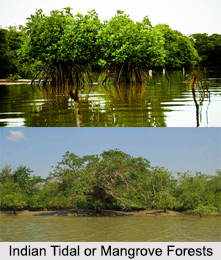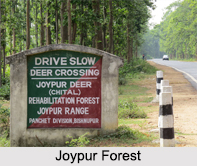 Baikunthapur is a forest region located in the western part of Dooars in West Bengal.
Baikunthapur is a forest region located in the western part of Dooars in West Bengal.
This forest region has its ancient origin- from the time of Lord Krishna. This forest region is extended from the south of the Himalayan foothills, between the Mahananda River to the west and Teesta River to the east. The main towns in the area are Siliguri and Jalpaiguri. The forests are partly in the Darjeeling district and partly in the Jalpaiguri district.
Baikunthapur, the ancient forest of Eastern Indian Himalayan Foothills is an important ecological zone, home to many wild elephants. But Baikunthapur in modern days is threatened by growth of the local population. The spreading of the local populace hinders Baikunthapur. The least disturbed areas are in the Mahananda Wildlife Sanctuary.
History of Baikunthapur
History of Baikunthapur dates back from the time of Lord Krishna. Historically, the Baikunthapur forests were the secure base of the Raikat princes in the time when Cooch Behar was an independent kingdom. Lord Krishna is also said to have found refuge in the forest at one time. According to the Hindu mythology, it is believed that Lord Krishna went into hiding in the jungles of Baikunthapur with his principal wife and queen Rukminiat one time. For this reason, ISKCON chose nearby Siliguri as the site for the biggest Krishna Centre in the North-east.
The Raikat family were local rulers in the Baikunthapur area between 1523 and 1771 that is the middle phase of medieval rule. The semi-independent rulers or feudal lords were related to the Koch dynasty of the Kamata kingdom. The Raikat capital was at Siliguri, then deep within impenetrable forests between the Mahananda River and Teesta River. During the 1680s, when the Bhutias were trying to take control of Coachbehar, the Raikats intervened and tried to establish their own supremo for the throne. After a civil struggle between the Bhutiyas and Raikats, the Raikats withdrew and accepted the authority of the Fauzdar of Ghoraghat, perhaps only nominally.
The Raikats moved their capital south to Jalpaiguri around 1720. The "faujdar" of Rangpur pressured the Raikats to accept the suzerainty of the Nawab of Bengal sometime between 1736 and 1739, but the Faujdar had to invade the territory in 1756 to enforce the claim. The Raikats still paid only partial tribute. In 1771 the British annexed Baikanthapur and the Raikats became Zamindars (tenants) of Baikunthapur, but remained largely independent in the protected areas of Baikunthapur. As late as 1839, the British colonial government in India complained that the Raikat had taken possession of the western Duars of Bhutan. In the 1850s commercial exploitation of Darjeeling tea began in the area. The British colonial government assumed the supreme power under their system of District Commissioners. It was under the British rulers till 1947.
The last Raikat of Baikunthapur died intestate in 1946. The family home is still occupied, but is suffering from disrepair. However, the crumbling palace in Jalpaiguri is a popular sightseeing spot for the national and international tourists. The palace ground holds the large palace building, its portico, a bushy garden, and two Hindu temples. The gate of the Raikat Palace is a huge reinforced concrete arch structure. There are several lakes in the Palace ground. One of the lakes is maintained by the Government of West Bengal.
Landforms of Baikunthapur
The northern part of West Bengal is covered by the sediment washed down from the Himalayas. The formation of Baikunthapur is the youngest in the area. It consists of very fine white sand inter-layered with ochre yellow sticky silty clay and overlain by dark grey to thick silty loam.
The Shangaon formation represents the deposits of the flood plain faces of the Baikunthapur formation. The measurements have shown a maximum arsenic content well beyond the permissible limit within a depth range of 10-30 m, in the Shaugaon surface. This raises concerns about the possibility of arsenic poisoning in the region and in downstream locations.
Climate of Baikunthapur
There are three main seasons like summer, monsoons and winter, existed in Baikunthapur forest. The summer season extends from first week of March to the second week of June, with April being the hottest month. Summer temperatures range in the mid-thirties. The Monsoons (June-September) bring severe rain. 125mm or more may fall in 24 hours, bringing all activity to halt and often causing local floods and landslides. The annual rainfall may exceed 250 centimetres. While the winter months are from September to February. The winters are chilly, with cold winds from the Himalayas. The temperatures may fall as low as 5 degrees Celsius during the cold weather seasons.




